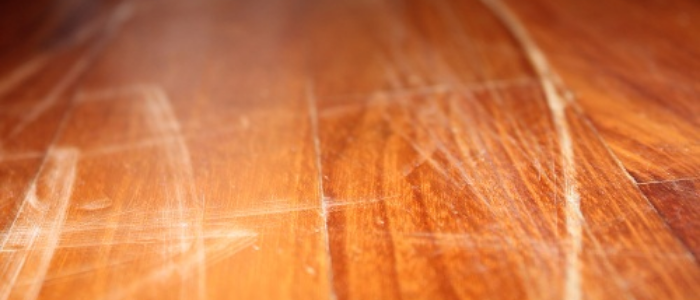Do you find your wooden floor covered with scratches; maybe you just feel you need the original brightness of your floor; restore that old feeling of beauty and freshness. If so, this article is for you.
This article provides you with the steps you may encounter during the process. By the way, this article is for those who like to get their hands dirty. If this is not you, you can also follow along and then hire a pro to do the job but you will know what is he/she doing.
If the scratches are not all the way down to the wood, you can scuff-sand the floor with a buffer; then apply a one or two layers of finish. Refinishing is usually simpler and cheaper compared to sanding down to bare wood. It is also done in less time; just few hours and viola! looks like new.
Refinishing Hardfloor
This task requires the use of a buffer. They is no need to buy one; just rent it from a near store. You will also need a vacuum to suck dust and debris. Before actually using the buffer, train yourself first on how to use and control it.
After you are done with roughing up the finish, put a water-based polyurethane, which can be reapplied in 3 hours. This kind of material is what we recommend over oil-based polys as the later takes more time to dry.
Wanna hear a PRO TIP?
It sometimes happen that the tannins from your wooden floor have a reaction with the water-based polyurethane leading to the discoloration of the floor. You can prevent this through applying a base coat before doing the poly. Start applying the base coat around the edges; do it evenly and slowly with a paint brush. Try not to cause bubbles as they will show up at the end. Smooth out the rest of the floor with a floor finish applicator and leave the base coating for 2 hours to dry.
Here are some additional common questions we’ve come across:
Steps To Refinish Hardwood Floors
1. Make sure to clean the floor from, debris or anything else. You can use a hardwood cleaner for that.
- Move all the furniture out of the room, spray the floor with flooring cleaner special for the hardwood. You can also use white vinegar (10 Liters of water to 1 Liter vinegar, you can use less but keep the ratio).
- Close the windows to prevent dust to come from outside.
- Gently wipe the floor with a mop wrapped with a clean towel.
2. Prepare the Perimeter of the floor
- With the aid of a 180-grit sandpaper, hand-sand any spots the buffer can not reach; these spots will mainly localize around the perimeter of the room.
- Rub with the grain 4 – 6 inches out from the baseboard, work over each board until you see the finish dulls and a powder forms.
3. Use the buffer

- Put a dust mask on for your safety; stick a maroon buffing pad to the buffer.
- Move the buffer in strokes from one side to the other in the direction of the grain; make sure to overlap each stroke by 6 or more inches.
- It will be easy for you to see which areas you have gone through as the old finish becomes powder as you go over it.
- Don’t keep the buffer working only at one place. Keep it moving always. To make the process easier, stop every may be 5-10 minutes and vacuum.
4. Vacuum
- Before you vacuum, leave the room for 15 minutes to make sure the powder settles and to not waste you effort.
- Vacuum using a clean filter and reach any settled powder between the boards.
- Dry-tack the floor with a microfiber cloth.
5. Cut in Along the Edges

- Make sure you cover your shoes, wear a respirator .
- Pour the finish into a clean plastic can using a cone filter.
- Brush a 3-inch-wide stripe beside the baseboards at a point farthest from the exiting door.
- keep in mind you will have lap marks if edges begins to dry, so stop after 10 minutes and go to the next step.
6. Apply the Poly

- Pour a 1 inch wide stripe of the water-based poly in line with the grain [pour just as much as you can spread in 10 minutes].
- Using a roller, roll out the poly along the grain, then across it.
- Work quick and overlap each pass to keep the edge wet.
- After 10 minutes, brush more finish along the edge, then pour and roll again for 10 minutes. Continue until the floor is covered.
- Finally wait for 3 hours before applying another layer of coating and wait for a week before binging back your furniture.


